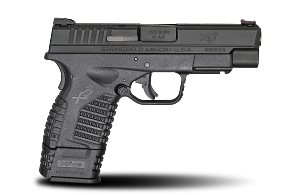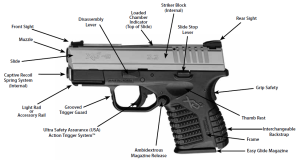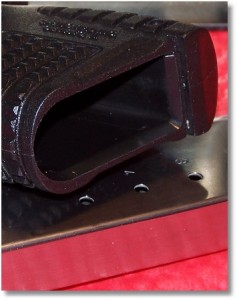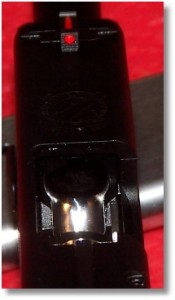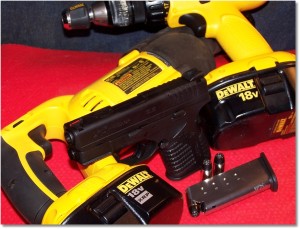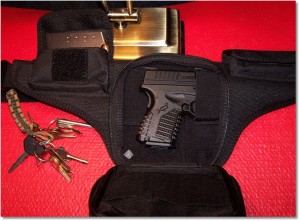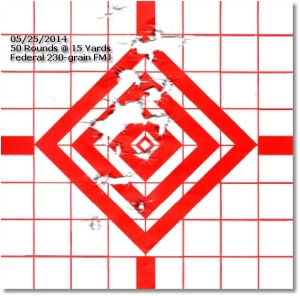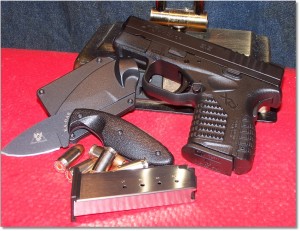 I have been denounced as one who does not write succinctly. So here is another not-so-succinct report on a very fine pistol. Enjoy the read.
I have been denounced as one who does not write succinctly. So here is another not-so-succinct report on a very fine pistol. Enjoy the read.
I just had a birthday and reached the fine age of 65. Since no one saw fit to purchase a new handgun for me on my birthday, I figured that I should do that myself. After all, it is one’s individual responsibility to ensure their own safety and I’m not one to shirk from many responsibilities.
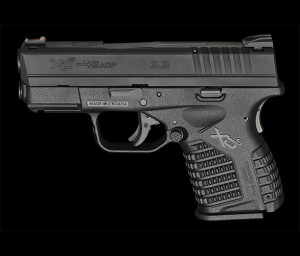 I had been interested in the Springfield XD-3 3.3 45 (herein referred to as simply the XDs45) since it first came out but I wanted to give some time for others to comment on it, evaluate it, and otherwise post their personal opinions of it. Aside from a few minor complaints, I thought the gun worthy of a closer look – and then there was the recall of all XD-S models. I felt that I needed more time before I plunk down some cold and hard cash on a possible loser. I was wrong and I freely admit it. The Springfield XDs45 has turned out to be a very popular pistol among those who, like myself, like large bores in small guns. The Glock G36 had already proven itself in the marketplace as well as Kahr and a few others. At the time that I write this, Ruger has introduced the SR series of pistols to include the SR45. Ruger has not; however, challenged the sub-compact market with a SR in .45 acp. I really wish that they would. With my experience with the SR45, SR9, and SR9c, it would be a fine pistol – and I would have one.
I had been interested in the Springfield XD-3 3.3 45 (herein referred to as simply the XDs45) since it first came out but I wanted to give some time for others to comment on it, evaluate it, and otherwise post their personal opinions of it. Aside from a few minor complaints, I thought the gun worthy of a closer look – and then there was the recall of all XD-S models. I felt that I needed more time before I plunk down some cold and hard cash on a possible loser. I was wrong and I freely admit it. The Springfield XDs45 has turned out to be a very popular pistol among those who, like myself, like large bores in small guns. The Glock G36 had already proven itself in the marketplace as well as Kahr and a few others. At the time that I write this, Ruger has introduced the SR series of pistols to include the SR45. Ruger has not; however, challenged the sub-compact market with a SR in .45 acp. I really wish that they would. With my experience with the SR45, SR9, and SR9c, it would be a fine pistol – and I would have one.
The Glock G36 is an excellent pistol and I happen to own one. I have shot the Kahr series of pistols and they do not really tease my fancy enough to call one or more of them mine although the P45 came close. The time had come for me to do some research on a sub-compact .45 acp and, initially, the Springfield XDs45 was not among the considerations. I really did not need another .45 acp pistol but this was turning into more of a want than a need, if you know what I mean. I was even interested in the Ruger P345 at one point, since it is an excellent pistol but it suffers from the DAO/SAO syndrome, as do many fine pistols – including Sig Sauer, which is high on my most favorite pistol list. Both the Kahr P45 and Sig Sauer P220 carry was out of my financial reach so the field was growing limited. I had handled, but not fired, the XDs45 early on in its life but at the time was not looking for a mini-gun; I was more interested in full-size adult pistols.
I have previously (and still do occasionally) carried a Bersa Thunder 45UC Pro and while I was confident in this gun for the purpose of self-defense, it is a little on the heavy side but handles recoil well. The Bersa Thunder 45UC Pro was my constant companion for several years. Of late, I have been carrying the Ruger SR9c around and it is worthy of my confidence as well but – it’s not a .45, which is my favored flavor of defensive ammunition in either .45 acp or .45 Colt.
Perusing the Springfield web site, I decided that it might be time to explore the XDs45 once again.
Unfortunately, for my bank account, a local gun shop is on my way to and from work. I have been a customer for several years, and I find it difficult to just drive by – especially when I am hungry for a new firearm. They were at a local gun show recently and had two Springfield XDs45s – both of which I handled and vowed to myself to stop in at the shop to take a longer and closer look at it. I fulfilled my vow to myself; stopping there on the way home from work later in the week. The one and lonely XDs45 was nestled between two XD-S 9mm pistols and shortly afterwards only the two XD-S 9mm pistols remained as the XDs45 came home with me.
I’m here to share my evaluation of the XDs45 with you. If you expect a biased report, it is not going to happen. If you expect numerous comparison between the Springfield XDs45 and other pistols like Glock and Kahr that will not happen either. To be fair, the Springfield XDs45 must stand on its own merits. There is plenty of information regarding this pistol versus that pistol versus this other pistol to warrant not wasting your time with that nonsense. A quick search on the WWW will garner all of the information you need (and some that you do not) on pistol comparisons.
The Springfield XDs45 is a sub-compact pistol with its 3.3-inch barrel. Since I will not fire a handgun with a barrel length shorter than my longest finger, the XDs45 is within safe limits for me. With a full grip on the pistol, and my trigger finger extended, there is only 1 ¼” from the tip of my finger to the end of the barrel.
Regardless, the pistol sits in my hand just fine. Springfield provides two back-strap options but I find that the arched version mounted in the pistol when purchased is just fine with my hands and me.
Although available in a stainless steel version, the version that I now have has the Melonite finish and fits the gun’s personality very well. The pistol; albeit small, has a sleek look to it. Both the slide and frame are well contoured. A bevel in the working end of the pistol helps holstering. The frame incorporates a small rail system for hanging your favorite light or laser but is non-intrusive in the looks and function department. Also at the working end of the pistol is a fiber optic front sight bead. Springfield also provides two replacement lengths of fiber optic; a 2″ red and green tube. Reading the directions from Springfield, an extensive procedure is used to replace the front sight rod and is beyond the scope of this article. Essentially, it means some cutting, sizing, and heating.
Between the front and rear sight, and just aft of the chamber and on top of the slide, is the chamber-loaded indicator. The chamber-loaded indicator is a visual and tactile device used to indicate that a round is chambered; live, dummy, or empty case. The right side of the frame houses a substantial external extractor that ensures that a fired case pulls free from the chamber (Note: If the extractor is flush with the frame – there is a round chambered). A frame mounded ejector ensure that the cases fly free of the chamber and does a fine job of it.
The rear sight is a standard two-dot affair. The rear sight is, as is the front sight, drift adjustable for windage. No elevation adjustment is available.
The slide has serrations at the rear of the slide with the serrations extending slightly over the top of the slide. The serrations provide an adequate surface for pulling or pushing the slide to the rear. The slide stop lever drops nicely in place when an empty magazine is in place and pushes up easily to lock the slide with no magazine inserted. Note that the slide stop lever takes quite a bit of pressure to release the slide. So much so that the “slingshot” method of releasing the slide is your best bet, this method also ensures positive chambering of a live round.
The take-down lever is a forward control and requires a bit of effort to move to the “release” position. Take-down of the pistol is straightforward:
- POINT FIREARM IN SAFE DIRECTION WHILE KEEPING FINGER OFF THE TRIGGER.
- Remove magazine and unload firearm.
- Draw back the slide to the rear stop position and lock it open, pushing up the slide stop lever. NOTE: If step 3 is difficult, use this alternative method of locking slide to the most rearward position: Place EMPTY magazine in the magwell, pull slide completely to the rear until it locks back. Make sure the magazine is EMPTY or you will inadvertently load the firearm. Then remove magazine and proceed.
- Visually inspect the chamber to confirm the firearm is unloaded.
Rotate the disassembly lever clockwise to a vertical 12 o’clock position. Disassembly lever cannot be rotated unless magazine has been removed.
Pull the slide slightly to the rear to release the slide stop lever. Then, firmly gripping the slide, allow the slide to slowly move forward until the spring tension is released. - While holding the slide, pull the trigger with the firearm pointed in a safe direction to fully unlock the slide from the frame. NOTE: Trigger will not re-set or release at this point, but will remain in the most rearward
position. If you move trigger forward you cannot reassemble pistol.
Move the complete slide assembly forward and off the frame.
Note that Springfield has just launched the XDs 4.0″ inch version and they should be hitting local guns stores soon.
With the exception of the magazine release, there are no right-side controls. The magazine release spring is stout. This should prevent accidentally discharging the magazine from the pistol while under fire, as it take quite a lot of force to press the magazine release buttons. When pressing the magazine release button, you will see the trigger assembly actually move forward. This is nothing to be concerned with, as it is normal.
Did I mention the beveled magazine well? Well, I did not so I better well mention that the magazine well is beveled well to allow easier insertion of magazines.
The polymer frame incorporates a squared trigger guard with slight serrations on the front side for those who like to place a trigger finger of the support hand on the outside of the trigger guard. The grip area is heavily serrated with a pattern slightly reminiscent of holding a WWII “pineapple” grenade. The grip consists of a contoured and replaceable (provided by Springfield) back-strap and the grip safety. I found the contoured grip comforting, but not necessarily comfortable in my hands. It does feel; however, just right for the intended use and I don’t foresee installing a grip sleeve or a Talon grip in the near future. For some who prefer a flatter back strap, rather than the arched back strap that is mounted on the pistol, you can find instructions for swapping out the back-straps in the owner’s manual. The back strap has a nice beaver-tail indention that help keeps your hand from mating with the slide during firing (also known as a “slide tattoo”). A thumb rest is contoured into each side of the frame, which gives you a place to rest your thumb in case you do not know what to do with it. If you use a high-thumb shooting grip, as I do, the grooves are just nice, sculptured adornments.
The XD line does not have a cocked indicator on the slide assembly at the rear of the pistol.
Let’s get to some important stuff. The 3.3″ stainless steel barrel utilizes the standard 1:6 twist with 12 lands and groves working to stabilize the .45 round down range. The barrel’s locking lug is substantial and the locking block is firmly pinned into the frame. The feed ramp is nicely polished and the chamber provides full case support.
The recoil spring assembly is a captive affair with dual coil springs riding within a dual steel rod arrangement. This unit looks very tough for the job at hand. The front side of the recoil rod assembly does not actually touch the front of the slide. I found the slide easy to work with this spring arrangement.
The XDs45 comes with two 5-round magazines with each having a removable floor plate. Aftermarket magazine extensions are available for those who prefer their little finger to hold onto something. I find that the magazine extension does help in drawing the pistol from the holster, as it gives the pinky something to hook. Other than that, I really do not have a use for most “pinky hangers.” Changing magazine base plate is an easy task. 7-round magazine with spacers are also available in the marketplace; however, they seem to be popular and finding them may be a chore. The magazine spring is substantial and moving ammunition up for chambering should present no problem. The magazine follower is a polymer affair but incorporates a metal tab that ensures positive slide lock-up when the magazine is empty
The trigger is nicely curved and slightly serrated. It would be very difficult not to engage the trigger flapper.
Trigger action, to me, defines the true quality of a firearm. The best that I can say about the XDs45 is that it is a handgun suited to self-defense, and unlike a DeWalt Power Drill or Reciprocating Saw does not require rechargeable batteries; it is not a target pistol and it is not a hunting pistol. The XDs45 provides a highly concealable pistol in a major caliber that proved itself through many engagements as a combat cartridge. The XDs45 trigger presents two slack points; the distance of the trigger flapper, which is the technical term for the Ultra Safety Assurance (USA) Action Trigger System, until it clears the frame and a secondary slack until the trigger engages resistance. Once the trigger finger encounters trigger resistance, and if the grip safety is properly pressed, the trigger continues rearward under steady pressure until the striker releases. There is no “stacking” of the trigger as the resistance is steady throughout this cycle. The XDs45 has what is known as a Pre-set striker. Pre-set strikers apply only to semi-automatic handguns. Upon firing a cartridge or loading the chamber, the striker will rest in a partially cocked position. The trigger serves the function of completing the cocking cycle and then releasing the striker. Pre-set triggers offer a balance of pull weight, trigger travel, safety, and consistency. The XDs45 pistol trigger rating is between 5.5 to 7.7 pounds of pull. My personal XDs45 exhibited a 7.8-pound trigger pull new and out of the box, according to my RCBS Trigger Pull Gauge. I expect; however, that the trigger pull will smooth out and lessen as the gun is broken in. Since I have experienced worse and better triggers than what is in the XDs, it is adequate for its intended use as a defensive pistol. The “break point” is difficult to determine at first, but after working the trigger during dry fire and live fire exercises, I can just about determine when primer ignition is about to occur. There is about 5/32″ of slack and another 5/32″ of resistance before ignition. Personally, I would rather have a smooth, but reasonably heavy, trigger during stress fire rather than one that is too light or that would surprise me. I want to know when the “hammer is going to fall” so to speak. The trigger on the XDs45 is just fine with me.
Live Fire!
I serviced the “Baby Boomer”, as I now affectionately call the XDs45. There a few lubrication points, noted by Springfield, that have to be lubricated and I followed those to the letter.
I had not received the holster for the XDs45 before the range session so I opted to carry the “Baby Boomer” in a Ka-Bar TDI Law Enforcement Fanny Pack. The XDs45 simply melts away from view inside the pack and the external pouches are perfect for hiding two spare 5-round magazines while 2, 7-round spare magazines can be hidden within the pouch itself. In addition, the TDI Law Enforcement knife is snuggled nicely in the expandable straps that provide security for its case. The Ka-Bar TDI Law Enforcement Fanny Pack provides an optimum means to conceal compact pistols and revolvers – especially when wearing over-sized shirts that are common to concealed carry folks.
Since the shooting session was a familiarization and break-in session for the XDs 45, range ammunition mixed in with some COTS ammunition was in order. 50-rounds of Atlanta Arms 185-grain FMJ took care of the range ammo while 50-rounds of Winchester White Box 185-grain FMJ Target Ammunition represented the COTS practice ammo. Rounding out the trio was 50-rounds of Speer 18-grain JHP bulleted ammunition manufactured by Georgia Arms (one of my primary and trusted providers). My normal .45 acp defensive load is the Winchester PDX1 Defender 230-grain BJHP but I opted not to test them in this pistol due to the limited number that I had on hand. I also have a backup of Black Talon ammunition but I reserve that for the most crucial of circumstances.
For this initial run, targets were set at 15-yards although I know that the XDs 45 is more than capable of hitting targets at greater distances (see the videos by Hickock45 on this pistol at http://www.youtube.com/watch?v=2fmr8iZyeXw and http://www.youtube.com/watch?v=1JFbBc0Y1jw. I was more interested in seeing how this pistol was going to dance in my hand when things could get up close and personal.
As my usual, I turned the overhead lane light out above the shooter’s box. The center of the front sight’s fiber is as close to .5-inch from the bore axis of the barrel as it could be. In low light, the fiber sight is useless and I rely only on the outline of the sight itself to line up the barrel with the intended point of impact. In this environment, I do not expect tight groups but I do demand effective hits.
The range session yielded a few lessons; the Xds45 does not like range reloads, period. The XDs is a 230-grain pistol. Results from 185-grain range FMJ reloads were dismal. Switching to 185-grain JHP from Atlanta Arms did yield better results but not anything that provides bragging rights. The best results were from Federal American Eagle 230-grain FMJ and several of my alternate defensive carry load; the Speer 230-grain BJHP from Atlanta Arms. With 230-grain ammo, impact was as close to point of aim as I can get point of aim. The target shown resulted from my experimenting with point of aim (offhand, slow-fire) with the Federal American Eagle 230-grain FMJ. The point of aim, at 15 yards, is essentially, where you place the front sight on the target. I had a couple of fliers but those were my fault and not that of the gun.
Trigger pull decreased from about 7.8 pounds to 7.5 pounds, which I consider within the range of a good combat trigger weight. The trigger also smoothed out quite a bit. The magazine release is still on the stiff side but I would prefer that over one that is too weak and that might be prone to premature discharge of the magazine. Trigger reset is quick.
The provided magazines performed flawlessly. Loading them is not a chore, but I did use my UpLula loader simply because of the number of round that I was loading. Cycling was perfect each time, every time. The pistol did not fail once. I wish that I could say the same for the shooter.
Recoil was better than I expected. Although I don ½-cut shooting gloves during practice, that does not lessen the actual recoil, just the felt recoil. With a proper grip, the pistol was easy to keep on target for follow up shots. If I were grip-lazy, or failed to follow through with my shot, I paid for it in the little holes appearing in my target. After a little over 100-rounds, I did start to feel some discomfort in the web of my shooting hand and my trigger finger started feeling the effects of the serrated trigger. This is not a showstopper. It is simply the effect of shooting a thin, sub-compact, major power handgun. The recoil does not widely disperse, it comes straight back in the hand in a narrow path. I had to alter my grip somewhat; I interlaced the little finger of the shooting hand with the little finger of the support hand. This grip gave me the best support, overall, on the pistol. It is somewhat of a weird grip, but it worked to help control the pistol.
It takes a lot of practice to become proficient with a thin, sub-compact, major power handgun and the XDs45 is no different. “Baby Boomer” and I will be spending quality time together in my attempt to control it and it not control me.
In closing, I have to say that I am impressed with the XDs45. Everything about the pistol says “quality” from the highly polished feed ramp to the Melonite finish. The pistol performed in a most admirable manner. As soon as my holster and spare magazines arrive, “Baby Boomer” will be ready for service as my primary EDC.
My only complaint about this whole affair is that I was not aware of the 4.0-inch version becoming available. As usual, I am behind the curve. Another day for that, perhaps?
Here are some links concerning the XDs45 you might find useful:
- http://www.springfield-armory.com/xd-s-series/
- http://www.concealednation.org/2013/05/springfield-xds-45acp-review-for-concealed-carry/
- http://averagejoeshandgunreviews.blogspot.com/2013/01/springfield-xds-45-acp.html
- Springfield XDS 45 ACP 3.3 Review : Small Powerhouse!: https://www.full30.com/video/efab473423832ddd5e877fbd43267c63?utm_source=system&utm_medium=email&utm_content=sootch00&utm_campaign=subscribers
A FINAL WORD, OR TWO:
Some may find the grip of the too thin for their liking. I would advise against such items as grip sleeves (Pachmyr or other brands), as they may slide up and over the grip safety during use, which effectively negates the grip safety and which could cause an unintentional discharge. I would go with something like the Hickock45-approved Talon grip (http://talongungrips.com/grips/springfield/xds.html, which is assured to stay in place.
Secondly, The Pierce magazine extension (http://www.amazon.com/gp/product/B00AYBFEPG/ref=oh_details_o00_s00_i00?ie=UTF8&psc=1) is an excellent addition, provides a “hook” point for spare magazines or when removing the pistol from a holster, and has little or no affect on concealment.
Last, but not least, are sights. I have not fired that many guns with night sights, but I have decided (as my eyes get older) that they would be a welcome addition to this pistol. I shot my Son-in-Law’s S&W 629 this weekend and the Trijicon sights helped me take out the x-ring with it. In bright light conditions, the front fiber optic sight that comes with the XDs45 is fine. However, a set of Trijicon sight front and rear would make a world of difference in medium to no light conditions. I will be having a set installed as they become affordable to me.
![]()





